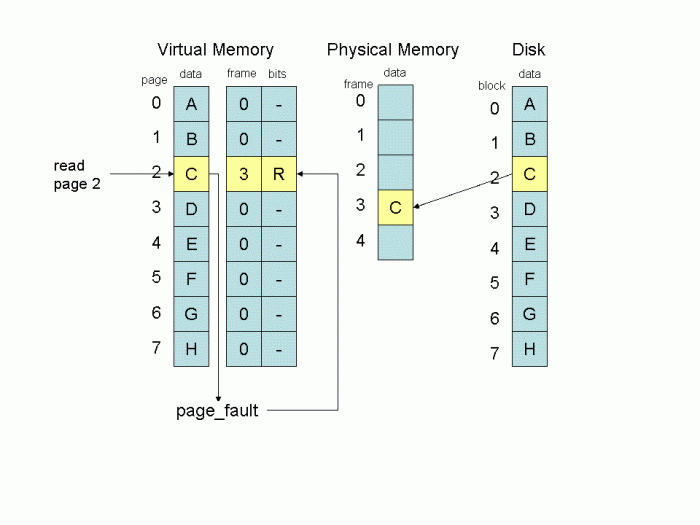Paging and Virtual Memory
Virtual memory is a technique in which storage device is used as a proxy of memory to keep process. The operating system copies a certain number of pages from your storage device to main memory. When a program needs a page that is not in main memory, the operating system copies the required page into memory and copies another page back to the disk. One says that the operating system pages the data. Each time a page is needed that is not currently in memory, a page fault occurs.

Page Fault
Page fault can be assumed as an interrupt that occurs when a program requests data that is not currently in real memory. The interrupt triggers the operating system to fetch the data from a virtual memory and load it into RAM. An invalid page fault or page fault error occurs when the operating system cannot find the data in virtual memory. This usually happens when the virtual memory area, or the table that maps virtual addresses to real addresses, becomes corrupt.
Demand Paging
In virtual memory systems, demand paging is a type of swapping in which pages of data are not copied from disk to RAM until they are needed. In contrast, some virtual memory systems use anticipatory paging, in which the operating system attempts to anticipate which data will be needed next and copies it to RAM before it is actually required.
